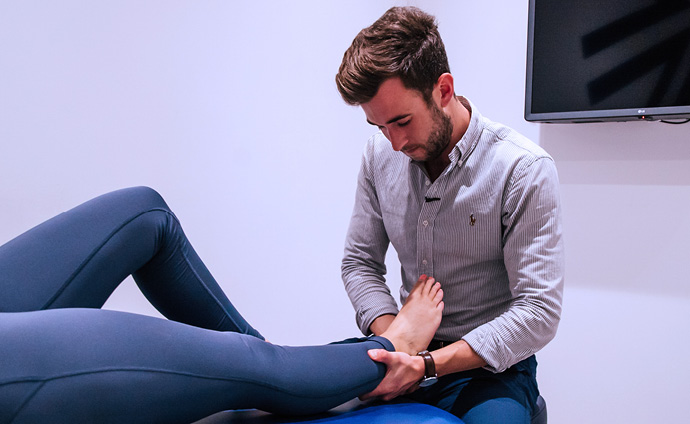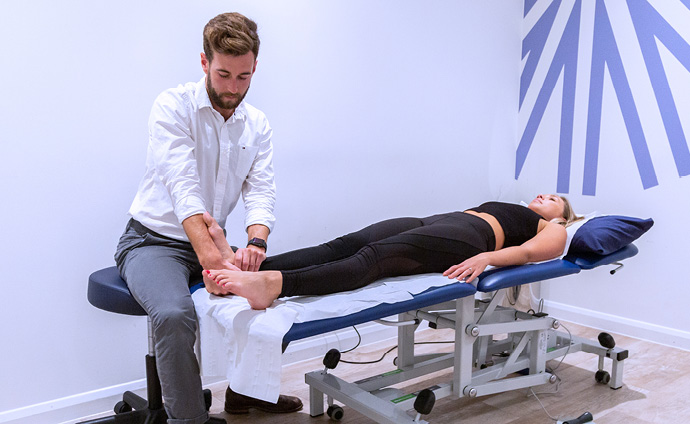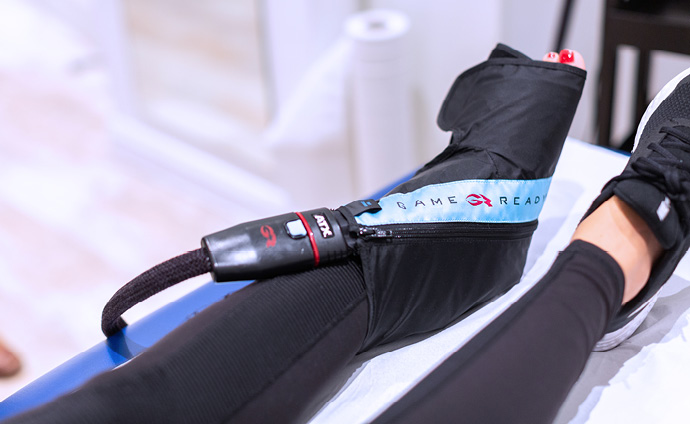There’s nothing worse than foot pain. After all, the second you get out of bed in the morning, your feet are put to work and when you have to avoid using them due to pain, it’s fairly debilitating!
There can be so many reasons for foot pain, but one condition that we’ve seen quite a lot of recently in Spectrum’s London Clinic is called Morton’s neuroma. This is basically when a nerve in your foot is irritated in some way, causing the tissue around it to thicken. This thickening of the tissue compresses the nerve, which is what causes all the problems…
What are the main symptoms of Morton’s neuroma?
Pain in the foot, commonly between your third and fourth toes, is the most obvious symptom of Morton’s neuroma. This could feel like a sharp, stabbing pain or even like a small pebble is stuck in your shoe as you walk. Some people also experience numbness or tingling, which is not unusual when it comes to more severe nerve pain. If left untreated and it becomes more acute, you might even find that the pain or numbness is so pronounced that it wakes you up during the night, not just when you’re putting pressure on your foot — so it’s best to seek professional treatment before it comes to that.

What are the most common causes of Morton’s neuroma?
You might end up with Morton’s neuroma for a variety of reasons — basically from anything that has caused damage to a nerve in your foot. In women, it’s not uncommon to find that wearing pointy-toed or high heeled shoes that put a lot of pressure on the feet are the culprit. Otherwise, intense, repetitive exercise that puts a lot of pressure on your feet, like running, are a common cause.
If it’s not what you’re wearing or doing, it’s possible that your Morton’s neuroma is due to unavoidable genetics. Flat feet, high arches, bunions and hammer toes (a foot condition where your toe has an unusual bend in the middle joint) are all associated with developing Morton’s neuroma.

What are the treatments for Morton’s neuroma and how can physiotherapy help?
If you’re suffering from mild Morton’s neuroma, there are a few easy things you can try at home to help ease your condition before needing more formal treatment. But of course, you’ll need a diagnosis first, which is the first example of where a professional physio can be of assistance.
At Spectrum, each session begins with a thorough assessment of your condition, medical history and relevant lifestyle aspects (in this case, aspects such as the sort of shoes you generally wear, how much and what type of exercise you do, how much time you spend on your feet at work and whether you are carrying a lot of extra weight) to determine what the problem is. Once Morton’s neuroma is confirmed by your physio, you may be able to make some simple changes to some of the lifestyle aspects mentioned above as a starting point. Combined with basic icing and taking over the counter anti-inflammatory medication such as ibuprofen, this could be enough.
If you’re suffering from a slightly more severe case of Morton’s neuroma, or you want to speed up the healing process, there are a number of treatments a physio can offer on top of the suggestions above.
Using Spectrum’s GameReady Ice/Compression unit on your foot is always a good starting point when it comes to inflammation of any kind. The combination of pressure and cold helps reduce the inflammation and pain of the damaged area much faster than a standard ice pack and rest and elevation (although it’s good to do these at home too!).

When it comes to nerve pain, there’s rarely a more effective treatment than TENS. TENS, technically known as Transcutaneous Electrical Nerve Stimulation, is a common and very safe electrotherapy treatment that can be used to relax and speed up the healing process of a damaged or tight nerve or muscle. At Spectrum, we use Bluetens, a next-generation treatment technology that we offer as part of our standard appointment model to patients, at no extra cost.
TENS sends electrical pulses from the little transcutaneous electrical nerve stimulator (which looks like a small pad) that is attached directly to your skin. These gentle, electrical pulses help to stimulate the nerves and muscles and release endorphins and other substances that help to block pain signals to the brain.
Guided exercise therapy is a must for Morton’s neuroma. Not only will you be given a personalised exercise programme to take home, tracked on our app called TrackActive (so you don’t have to try and remember all the exercises!), you’ll also have access to a full gym of specialised equipment in our London clinic. Based on your assessment, we’ll give you a range of exercises designed to improve the intrinsic strength, mobility and stability of your foot and your entire lower limb if necessary.
Finally, we may offer you some manual therapy, which is delivered using our hands, as opposed to a device like a TENS machine. Hands-on physio treatment can help improve the function of damaged tissues and nerves, speeding up your recovery and reducing the pain in your foot.
Do you think you might be suffering from Morton’s neuroma? There’s only one way to know for sure… Book an appointment with one of our physios and we’ll get you back to being pain-free in no time!



